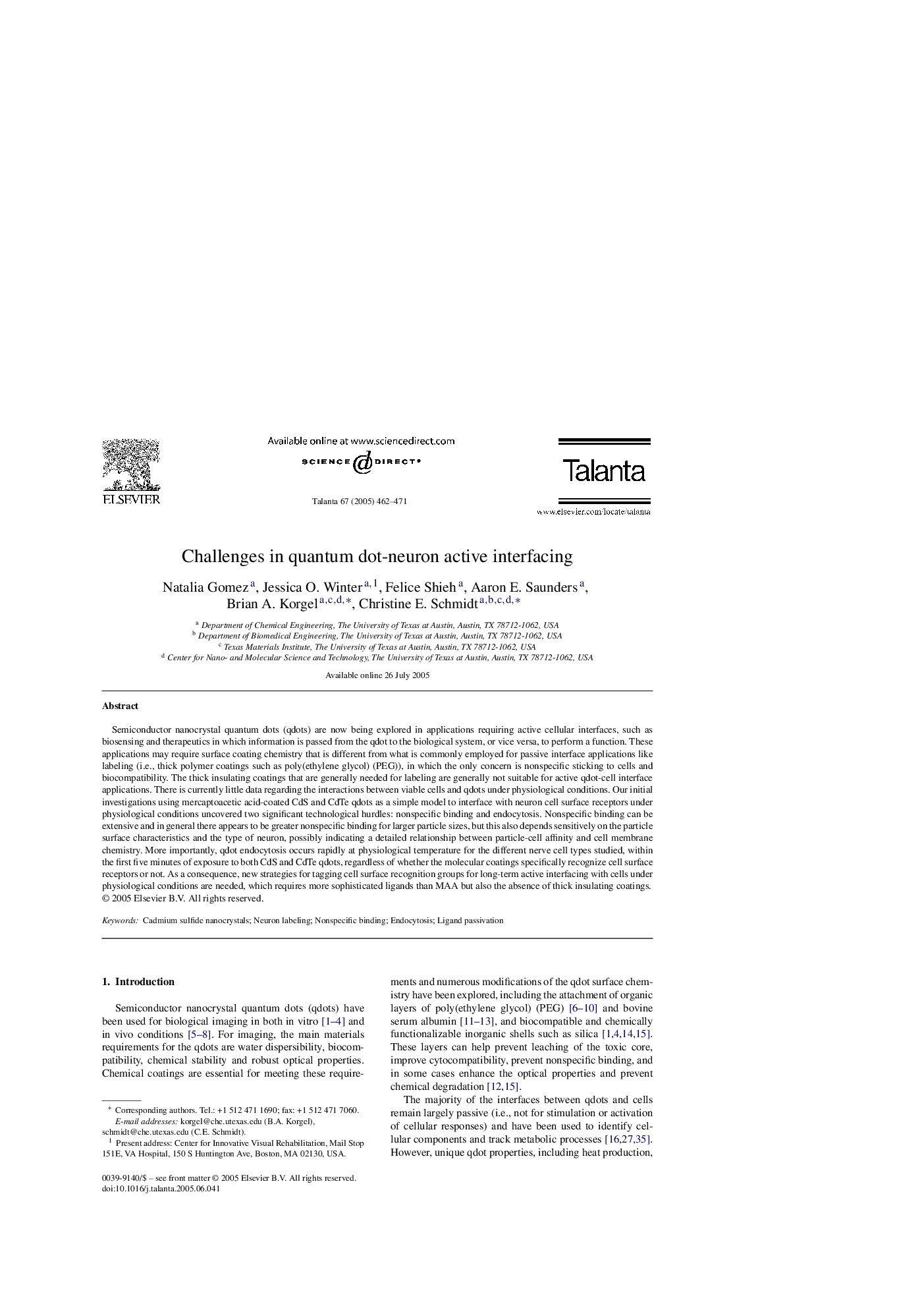| Article ID | Journal | Published Year | Pages | File Type |
|---|---|---|---|---|
| 10560606 | Talanta | 2005 | 10 Pages |
Abstract
Semiconductor nanocrystal quantum dots (qdots) are now being explored in applications requiring active cellular interfaces, such as biosensing and therapeutics in which information is passed from the qdot to the biological system, or vice versa, to perform a function. These applications may require surface coating chemistry that is different from what is commonly employed for passive interface applications like labeling (i.e., thick polymer coatings such as poly(ethylene glycol) (PEG)), in which the only concern is nonspecific sticking to cells and biocompatibility. The thick insulating coatings that are generally needed for labeling are generally not suitable for active qdot-cell interface applications. There is currently little data regarding the interactions between viable cells and qdots under physiological conditions. Our initial investigations using mercaptoacetic acid-coated CdS and CdTe qdots as a simple model to interface with neuron cell surface receptors under physiological conditions uncovered two significant technological hurdles: nonspecific binding and endocytosis. Nonspecific binding can be extensive and in general there appears to be greater nonspecific binding for larger particle sizes, but this also depends sensitively on the particle surface characteristics and the type of neuron, possibly indicating a detailed relationship between particle-cell affinity and cell membrane chemistry. More importantly, qdot endocytosis occurs rapidly at physiological temperature for the different nerve cell types studied, within the first five minutes of exposure to both CdS and CdTe qdots, regardless of whether the molecular coatings specifically recognize cell surface receptors or not. As a consequence, new strategies for tagging cell surface recognition groups for long-term active interfacing with cells under physiological conditions are needed, which requires more sophisticated ligands than MAA but also the absence of thick insulating coatings.
Keywords
Related Topics
Physical Sciences and Engineering
Chemistry
Analytical Chemistry
Authors
Natalia Gomez, Jessica O. Winter, Felice Shieh, Aaron E. Saunders, Brian A. Korgel, Christine E. Schmidt,
